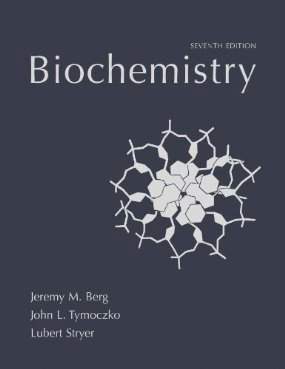Connecting...

For more information, please see full course syllabus of Biochemistry
Biochemistry Enzymes IV: Lineweaver-Burk Plots
The Michaelis-Menten equation relates the rate of reaction to the concentration of substrate. It can be converted into the Lineweaver-Burk equation by taking the double reciprocal. The Lineweaver-Burk equation is linear and can be plotted to find Kₘ/Vmax (slope) and 1/Vmax (Y-intercept) where Kₘ is the Michaelis-Menten constant and Vmax is the maximum rate of reaction. This analytical procedure can identify these two terms very accurately for new enzymes. The lecture includes with an example based on carboxypeptidase A, an enzyme made in the pancreas, using several different initial substrate concentrations. It’s important to remember that Kₘ and Vmax are strictly kinetic parameters that describe the overall catalyzed reaction, not the individual steps.
Share this knowledge with your friends!
Copy & Paste this embed code into your website’s HTML
Please ensure that your website editor is in text mode when you paste the code.(In Wordpress, the mode button is on the top right corner.)
- - Allow users to view the embedded video in full-size.










































 Answer Engine
Answer Engine




1 answer
Thu Jan 30, 2014 3:18 AM
Post by Faizan Mohiuddin on January 29, 2014
I graphed the values for 1/[S] and 1/[V]. However, I have no values for -1/Km nor for 1/Vmax. I am not allowed to use a graphing calculator. Thus, how are 1/Vmax and -1/Km solved from the given table regarding different concentrations and velocities? Please provide a detailed way to do so.
1 answer
Tue Sep 24, 2013 8:04 PM
Post by Vinit Shanbhag on September 15, 2013
Hey Raffi,
How wld you calculate the initial rates of reaction experimentally for a novel enzyme, do you know any experimental set up?
I am guessing that the initial rate in terms of regular protein (not an enzyme) will be the protein drug complex (fractional occupancy)that can be measured by equilibrium dialysis? plz correct if I am wrong.
1 answer
Fri Apr 26, 2013 1:49 AM
Post by Stephen Andrews on April 25, 2013
Is there a video that deals with the Scatchard Plot?
1 answer
Thu Mar 21, 2013 1:55 AM
Post by Roxanna Allamey on March 20, 2013
WOW!! YOU JUST SAVED ME ON MY EXAM!!!!!!!! THANK YOU SO MUCH